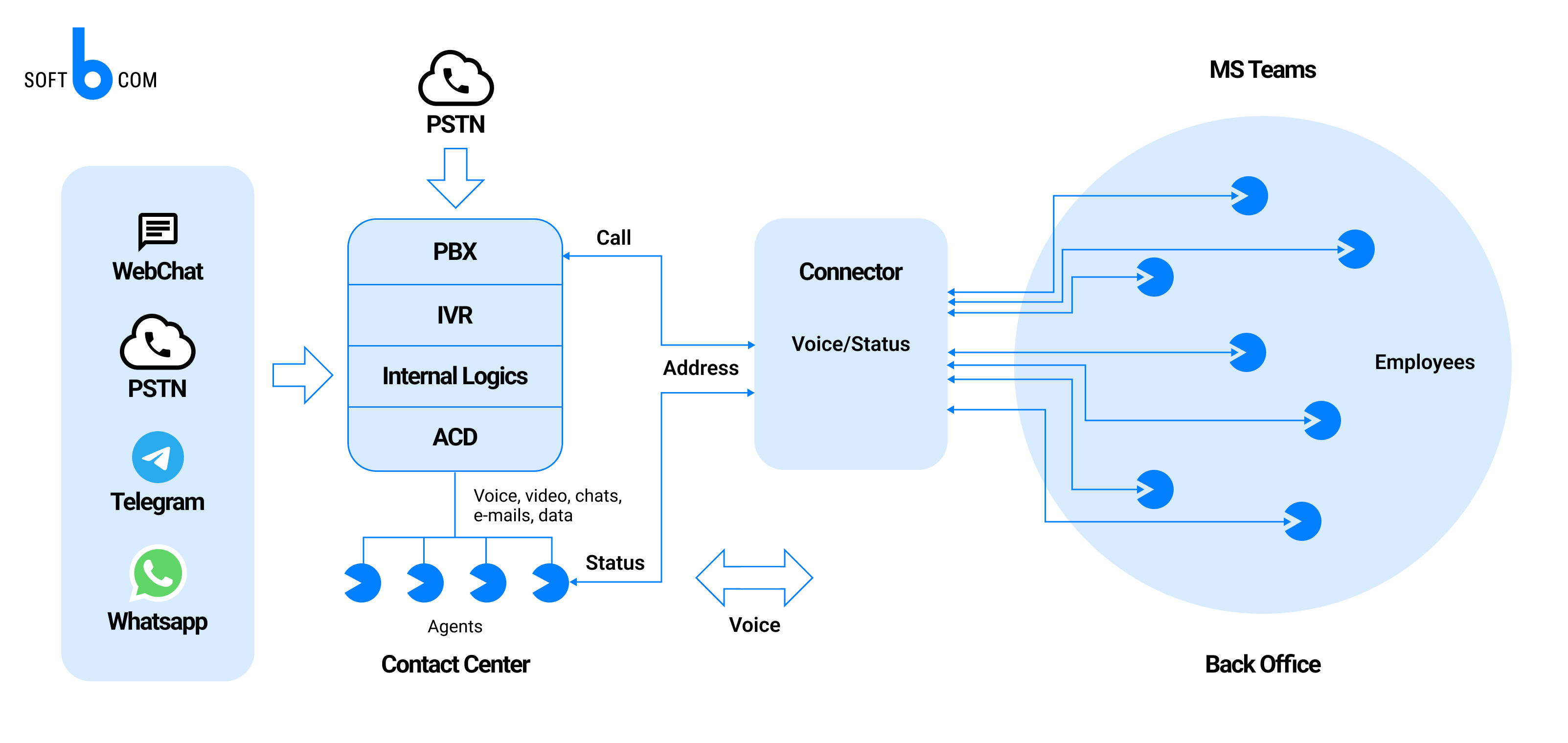
Contact center software and principles are widely used for customer service in front offices of many companies. In addition to the front office, such companies will also have back offices. The back office sums up, for example, second-level support specialists, employees working in accounting, in the bank's credit department, in the department of processing orders or deliveries, etc.
They usually do not respond directly to customer inquiries, but front office staff (agents) should be able to transfer calls to them where necessary, using "transfer with consultation", "direct transfer" or conference mode. Such cases may include, for example, the need to connect the bank’s loan specialist to the conversation with the client, or a transfer to the specialist in the second level of support, who deals with the specific client’s request.

In today's back offices, MS Teams is increasingly used for communication, while existing Contact Center Software has traditional IP telephony as the basis of voice communication. Therefore, to provide the abovementioned call transfers you need a connector between your contact center and MS Teams.
Such a connector was realized by SoftBCom Berlin, and it’s combining two basic functions: providing voice communication and transmitting information on the status of an employee (or a group of employees) to the agent's workplace (namely whether the employee is free or busy). The MS Teams system is able to provide this information.
MS Teams allows you to control a whole range of statuses, e.g. " do not disturb ", "in conversation", "busy", "available", "be right back".
Guided by this information, the agent can select an employee of the desired profile, who can service the current request.
MS Teams is becoming increasingly popular in the corporate environment and is often the only communication system used in the back office. For companies where MS Teams is deployed, maintaining a regular (or traditional IP) telephony system in the back offices simultaneously becomes redundant and expensive.
The functionality described above may be limited to the availability of the required licenses for software and communication lines (MS, Contact Center, phone provider lines, etc.).

Contact Center Software is a powerful tool for client servicing at the front desk. On the other hand, MS Teams is a very popular means for internal office connection. But to transfer inbound calls from the front office to the back office expert who’s using Teams, you need the special connector.